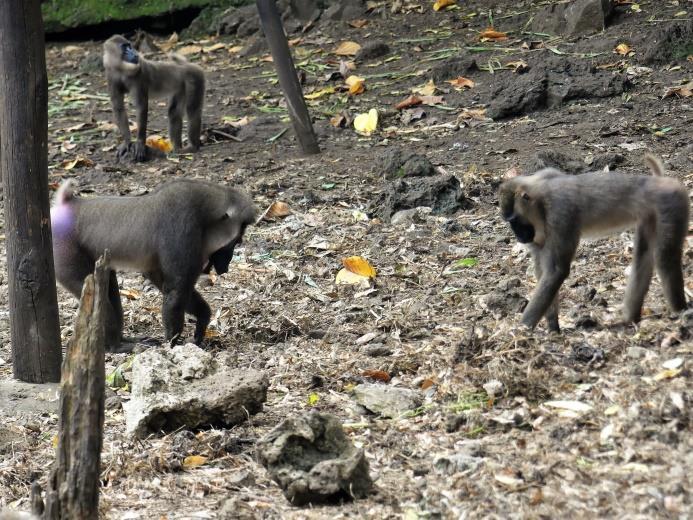
3 minute read
2. Population management & Animal welfare
1. Pandrillus-GoC Partnership & Public Relations
Advertisement
Funders
□ Drafted the protocol to re-open the Limbe Wildlife Centre to the public in the beginning of 2021
November 2020 objectives:
□ Validate internal rules and regulations (pending) □ Review the proposal of the national strategy to rehabilitate and release the African grey parrots □ Review the re-open the Limbe Wildlife Centre to the public in the beginning of 2021
2. Population management & Animal welfare
Funders
Ongoing activities
□ Maintained frequency and diversity of enrichments in each section (Images 1-4)
Specific activities
□ Drill: Subgroup of Jomio (adult male) with Ossing and their (“accidental”) offspring
Emilia is successfully back into group (Image 5)
□ Maintained several structural enrichments in Drill and Savannah-dwelling guenons
(Image 6)
□ Vet cares (September-October 2020): ◌ 67 Primate individuals treated; 2 anesthesia performed; 31 individual sampled (2 blood samples for hematology analysis, 0 blood samples for biochemistry analysis, 35 fecal samples for coprology analysis, 0 pus swabs for microbiology analysis); 0 contraception; 1 identification with a microchip; 1
laceration repair; 27 drug therapies (of which 52% to treat 4 individuals with resistant bacteria abscessation): 74% dietary supplements, 19% antibiotics, 4% painkillers and anti-inflammatories, 4% others; 2 health checks; 0 death ◌ African grey parrots: 18 general health checks; 0 health check before release; 0 transferrals to the soft-release aviary, 0 transferrals to the rehabilitation aviary; 2 individuals received intensive care treatment with 3rd
antibiotic treatment and special diet; 3 deaths (Images 7-8) generation
Image 1. Mbu is enjoying a palm nut. Fat is important for hormones and to keep the Chimpanzee strong and healthy, but its intake must be strictly monitored to prevent overweight. Yet, most of the obese animals in captive facilities are because of the excess of sugar present in some fruits. Vegetative parts and fruits low in sugar content are preferable. Image 2. Browse provided to the drill is extremely good for their health. All browse are provided through the communitybased green project. Here, Janu (mother) and Irene, her daughter, are eating potato leaves that were harvested by woman farmer groups to increase land value by purchasing crop by-products to reduce encroachment into the Mount Cameroon National Park, empowering women and sustainably promote gender equality.


Image 3. The remaining bamboo sticks used for structural enrichments and screens are great to provide and hide some food enrichments to stimulate natural foraging behaviours. Image 5. Adult male Jomio (left) is finally back into the group after a long period in a satellite cage. Jomio has always been a challenger, with a rough character and it took expertise, patience, and adequate monitoring to ensure his successful reintegration. The LWC is committed to enabling each rescued individual to live in a natural social environment. Image 4. The bamboo sticks are filled with leaves and small pieces of food items (bread, fruits, vegetables, peanuts) mixed with a little amount of honey. That will keep


them busy for quite a time and they love it! Image 6. Two drills using the large rope in their enclosure. Ropes are excellent to stimulate them to improve their balance and movements just like in wild trees.








